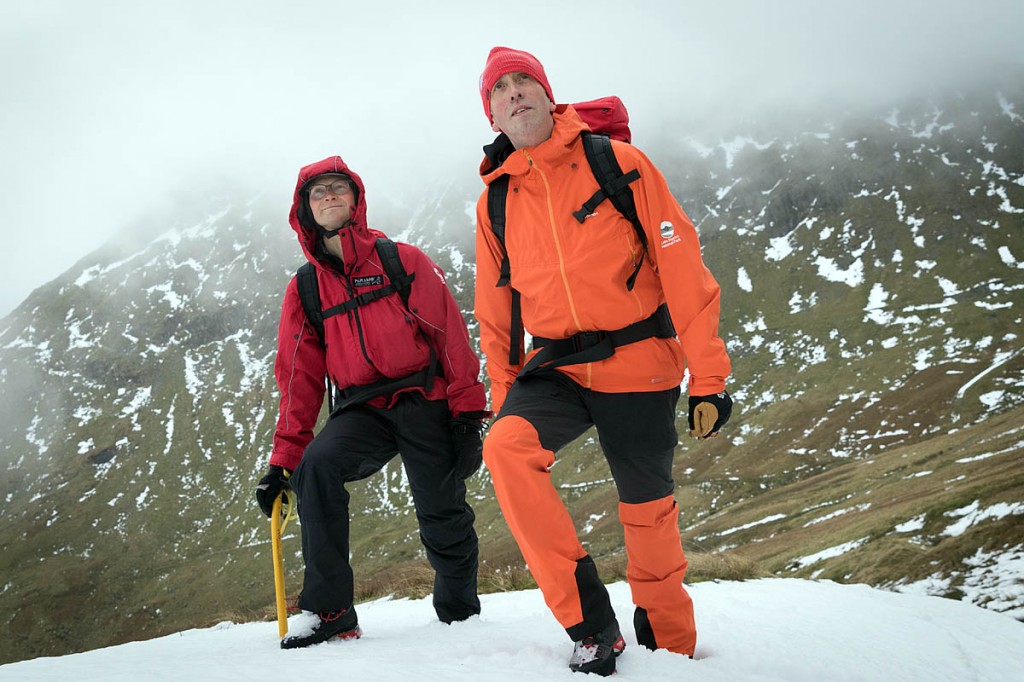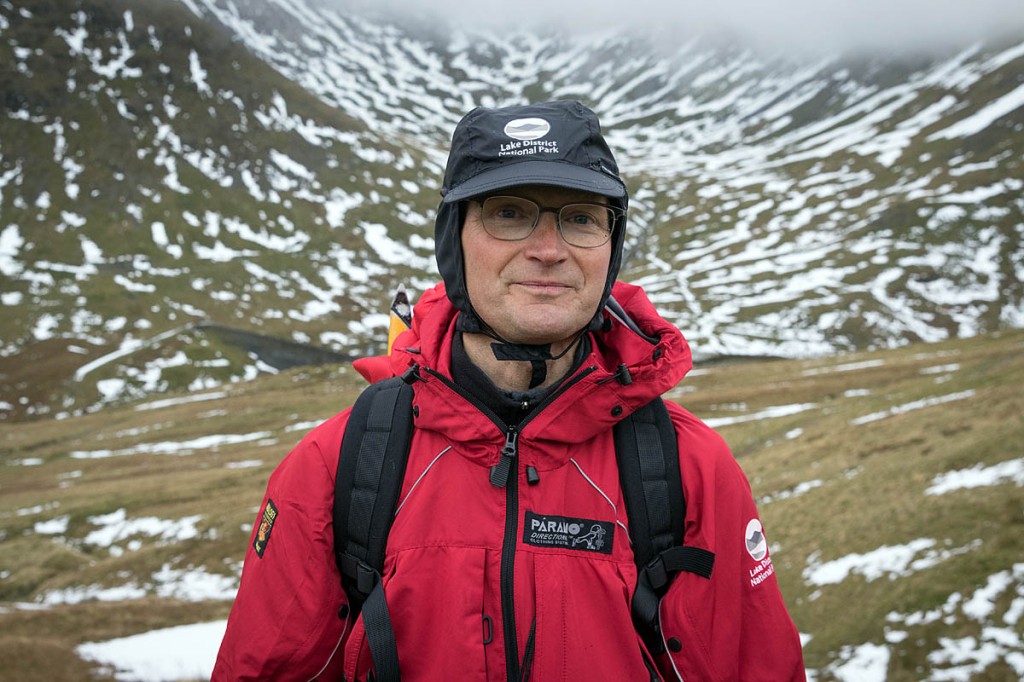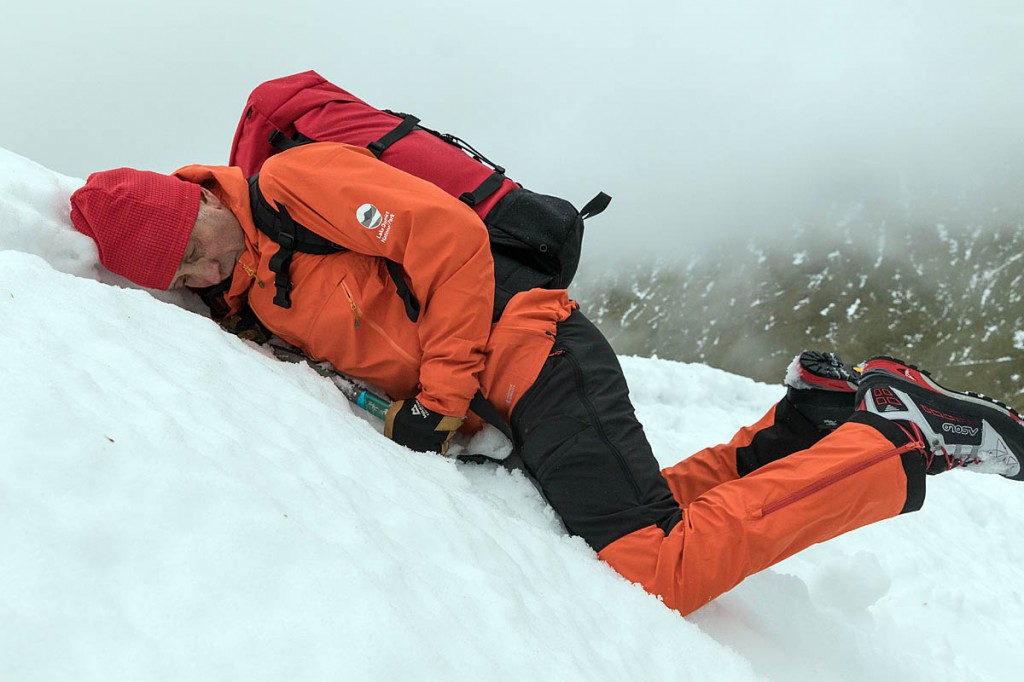As thoughts turn to turkey and mince pies with the approach of Christmas, spare a thought for the man who will be pulling on his boots on Christmas Day to make the ascent of England’s third highest mountain, no matter what the weather.
Jon Bennett is one of a pair of felltop assessors who are paid to climb Helvellyn each day during the winter to record weather and conditions underfoot for the Lake District National Park Authority’s Weatherline.
While most of the country will be settling down to indulge themselves with festive fare, the Ambleside-based outdoors expert will be collecting vital safety information to help walkers and other enthusiasts heading for the hills in the national park.
He shares the task with Graham Uney, a Mountain Leader who also lives in Cumbria. Graham works nine days on and takes five days off during his winter stints working for the park authority. He was rostered make the ascent on 25 December, but his colleague volunteered to step in. “It would have been my shift but Jon volunteered for it,” he said. “It’s very kind of him.”
Grough joined the two men on the route to Helvellyn as they prepared for their winter duties.
Graham works in the outdoors industry and is a member of a mountain rescue team. He holds the Winter Mountain Leader Award and the Single Pitch Award rock-climbing qualification. Jon, on the other hand, has no formal mountain qualifications but has a wealth of hill experience.
He said: “Always apply for a job; you never know whether you might get it or not. My interview was basically walking up a hill.”
When he’s not assessing mountain conditions, he works skippering and crewing boats for Windermere Lake Cruises. During the winter divides his working time between the lake and Helvellyn.
He started his ninth season as a felltop assessor at the beginning of the month.
Graham is undertaking his third season as a mountain assessor. This winter, he is again running winter-skills training courses and the pair are offering an additional service. He said: “We record the wind speed, temperature, windchill and wind direction so if it’s snowed, you can tell where the snow is going to be. Also we measure snow depth.
“We’re now doing the #summitsafely campaign, which is 20 bits of advice throughout the season, one a week until the end of the season, and that’s linked into prize draws and give-aways.
“People can go on Twitter, use the hashtag and tell us something they have done to keep them safe in the hills that week, and they get entered into a prize draw to win prizes from one of our sponsors.
“It’s building on what we do already. The Lake District Weatherline obviously gives ground conditions and weather forecast, then last year we started the winter-skills courses which is an add-on to the service we offer already. I think this just builds on that and reinforces the information we’re giving out already.”
Jon explained how some hillgoers who have not walked on the Cumbrian mountain in winter get into difficulties. “We get a lot of people who come up in winter who are quite simply not aware of how different conditions can be,” he said. “People come up in summer and they are unware of how different conditions are in the winter. So the tips are going to be very much telling people what to expect.
“Things like my favourite tip: always be prepared to turn back. The mountain will always be there for another day. If conditions are getting too much for you; if you don’t think you’ve got the skills to progress, or the equipment, or the visibility’s not right, or whatever is not quite right, then turn back.
“We see people who have set off from the car park, and all you can see around you are green fields and green hills. The snow level begins higher up and it could be obscured by cloud so you can’t see it. They set off; they’ve no ice-axe, no crampons; they’ve got fairly high up and encounter the snow and ice and they simply haven’t the right equipment to deal with those conditions.
“Because they are quite high up already and the summit they can see is just around the corner, they think: ‘let’s keep going’ and that’s when it gets potentially dangerous and that’s when we often step in. To be frank, we’d do that anyway even if we weren’t working, just have a friendly word to say to people: are you aware there’s ice up there or steep snow slopes and if you slide and haven’t got an ice-axe to stop yourself falling, you’re going to get into serious difficulties.
“Generally speaking, people do adhere to that advice. The last thing we are is felltop police and we’re not there to say: you haven’t got the equipment; go back down. We’re there to give people information; that’s what the whole service is about.
“We give people the right information so they can make the right choices which, generally speaking, people do.”
Helvellyn was chosen as the usual destination for the two felltop assessors because of its popularity and because its headwall, above Red Tarn, holds snow and ice frequently, and the two classic ridges often used for ascent and descent are often in winter condition.
Jon said: “Nearly always the exits to the ridges are where problems occur, particularly Striding Edge and Swirral Edge. There can be steep snow banks which, particularly if they freeze over, can be hard névé and very solid snow and ice which, if you haven’t got the right equipment: crampons and ice-axe, to get down them, are very treacherous and unfortunately that’s where accidents have occurred in the past.
“So that’s something we often highlight. They are both east-facing, so they hold the ice and snow a lot longer than other areas.
“Cornices happen on the east side of the summit as well, and that’s something we particularly push. If you’ve done the edges, you can see it on the way up, and stay back from the edge, generally speaking, but the problem is if people come up from the western side, the Thirlmere side, they have no idea when they get to the summit, when they get to the edge they are just standing on frozen snow over a lot of nothing. So that’s another thing we highlight.”
Graham said being a felltop assessor is a dream job for him. “It’s a job that suits both Jon and me, but it wouldn’t suit most people. People imagine it’s always lovely but it’s not. Most of the time, it’s middling. We get some good days; we get some bad days; but a lot of the time it’s just grey. That wouldn’t suit everybody and also, climbing the same mountain every day wouldn’t suit most people.
“A lot of people would just get bored. But it clearly suits us, because we’re both still doing it.”
Jon said: “You need a memory like a goldfish.
“We know Helvellyn well but in the past I’ve given people advice when they are going up without map and compass and had comments such as ‘Oh it’s all right mate, I’ve been up here five times before’ and I say: to be honest with you, I’ve been up here 450 times and I used my map and compass yesterday.
“I still have to navigate off the top in horrible conditions. If you can’t see, you can’t see, no matter how many times you’ve done it.”
As well as checking the Lake District Weatherline and the hashtag #summitsafely on Twitter, Jon recommends would-be Lakeland hillgoers learn mountain and winter skills and how to navigate safely. Details of Graham’s winter-skills courses can also be found on the Weatherline website.



Pauline
24 June 2017Love this article and the passion in both Jon and Graham. Thanks for doing your job well as it gives us the assurance of the safety if we were to climb the mountains.